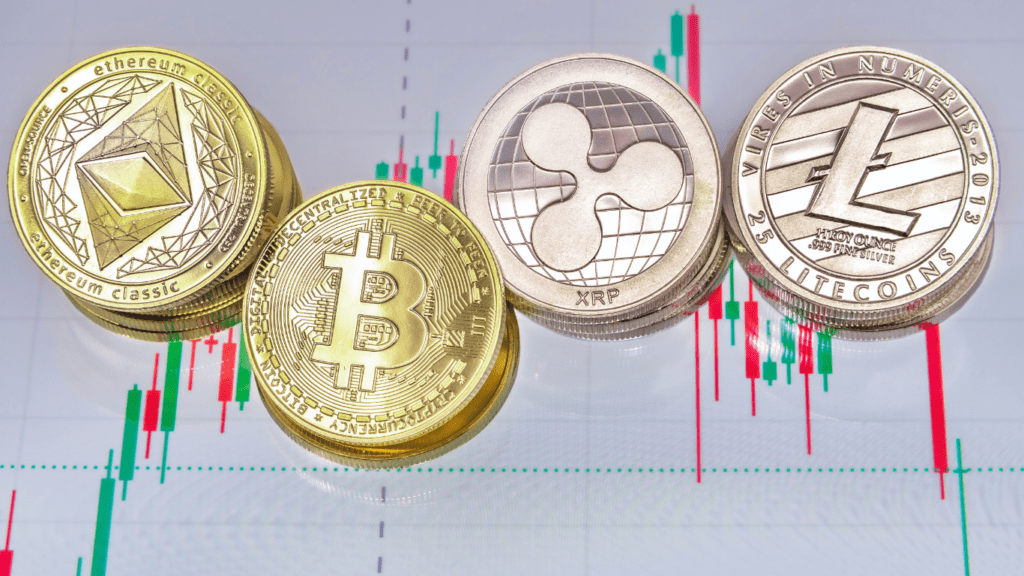Diving into the world of cryptocurrency trading can feel overwhelming at first. I remember how confusing it seemed with all the charts, jargon, and market fluctuations. But with the right guidance and strategies, it’s possible to navigate this exciting space with confidence.
Understanding the Basics of Cryptocurrency
- Cryptocurrency operates on blockchain technology, a decentralized ledger ensuring transparent and secure transactions. Each transaction gets verified by a network of computers, eliminating reliance on central authorities like banks.
- The two primary cryptocurrency categories are coins and tokens. Coins, like Bitcoin or Litecoin, run on their own blockchains. Tokens operate on existing blockchains, such as ERC-20 tokens on Ethereum.
- Market capitalization determines a cryptocurrency’s scale and popularity. Higher market caps, like Bitcoin or Ethereum, often represent established assets, while lower caps signify newer or riskier options.
- Volatility defines the crypto market. Price swings can bring significant opportunities or risks. Understanding this characteristic prepares me to make informed decisions.
- Wallets store cryptocurrencies securely. Hot wallets connect to the internet, offering convenience but less security. Cold wallets, stored offline, prioritize safety over accessibility. Examples include hardware wallets (e.g., Ledger) and software wallets (e.g., MetaMask).
By grasping these core concepts, I’ve built a foundation to navigate the complexities of crypto trading confidently.
Importance of Research Before Trading
Thorough research lays the foundation for successful cryptocurrency trading. Understanding the market dynamics, trends, and specific asset data reduces risks and enhances decision-making. Without prior knowledge, impulsive trades often lead to unnecessary losses.
Reliable sources provide accurate market insights. I avoid social media rumors and focus on trustworthy platforms like official cryptocurrency websites, blockchain explorers, and well-known financial news outlets. This ensures that my decisions are based on verified information, not speculation.
Analyzing a cryptocurrency’s whitepaper reveals its utility and potential. For example, reviewing Ethereum’s whitepaper explains its smart contract functionality, offering me clarity on its long-term value. Researching the development team and partnerships further validates the project’s credibility.
Tracking historical price data and patterns identifies potential market trends. I study candlestick charts, average price movements, and trading volumes to anticipate future fluctuations. Combining this analysis with global market news helps me create a better trading strategy.
Start with a Solid Trading Plan
A solid trading plan serves as the foundation for any successful crypto trading journey. It outlines clear objectives and strategies while helping to manage emotions and mitigate risks.
Setting Realistic Goals
Clear, realistic goals guide every trading decision. I focus on defining actionable targets such as daily, weekly, or monthly profit percentages rather than chasing unrealistic returns. For example, instead of aiming to double my portfolio in a week, I might set a 5% monthly profit target. Measuring progress and adjusting goals ensures that my strategies align with market conditions.
Quantifiable goals improve discipline and prevent impulsive decisions. Long-term objectives, like accumulating a specific amount of Bitcoin or reaching a portfolio value, keep efforts focused. I avoid comparing my progress with others, as market experiences vary widely.
Determining Risk Tolerance
Understanding my risk tolerance defines how much capital I’m prepared to lose without emotional strain. I evaluate factors like my financial situation and trading knowledge to establish thresholds. For instance, I might allocate only 1-2% of my total capital per trade to minimize losses.
I calculate position sizes based on these limits and use stop-loss orders to protect investments. In volatile markets like crypto, managing downside risk is critical. Beginners often underestimate emotional impact; I balance ambition with realistic constraints to maintain consistent performance.
Choosing a Reliable Crypto Exchange

Selecting the right crypto exchange is critical for building a safe and productive trading experience. I focus on platforms that align with my needs and offer strong protections for funds.
Key Features to Look For
I prioritize exchanges with high trading volume, as it ensures better liquidity for quick trades. Platforms with diverse cryptocurrency options let me expand my portfolio. Low transaction fees save money over time, so I compare costs across exchanges. User-friendly interfaces and mobile apps streamline trading for beginners. Reliable customer support is essential for resolving issues without delays.
Security Measures to Consider
I assess the exchange’s security protocols to protect my funds and data. Two-factor authentication (2FA) adds an extra layer of security for account access. Platforms storing most funds in cold wallets offer more protection against hacking. Exchanges with insurance against breaches further safeguard my investments. Regulatory compliance indicates transparency, which builds trust in the platform I choose.
Leveraging Technical and Fundamental Analysis
Leveraging technical and fundamental analysis is vital for making informed cryptocurrency trading decisions. These methods help me assess market behavior, identify trends, and evaluate external factors impacting a cryptocurrency’s value.
Understanding Market Trends
I use technical analysis to understand market trends by studying historical price movements and volume patterns. Tools like candlestick charts, moving averages, and trend lines reveal key price levels and momentum shifts. For instance, identifying support and resistance levels helps me forecast potential price reversals or breakouts. Oscillators such as the Relative Strength Index (RSI) highlight overbought or oversold conditions, signaling possible trend changes.
Evaluating market trends also requires a broader perspective. By analyzing longer-term trends, I eliminate noise caused by short-term fluctuations. Combining multiple indicators strengthens my analysis, reducing the risk of false signals.
Monitoring News and Updates
I track news and updates to align my fundamental analysis with real-world developments. Regulatory changes, partnerships, or government policies heavily influence the crypto market. For example, news of a major company adopting cryptocurrency for payments can drive a price rally.
Reliable sources are crucial when monitoring updates. I frequently check reputable financial news platforms, official project announcements, and global economic reports. Following social media channels, such as Twitter accounts of industry leaders and blockchain developers, also helps me stay current. This awareness enables me to anticipate market reactions and adapt my strategy effectively.
Diversifying Your Investments
I prioritize diversifying my cryptocurrency investments to reduce risks and improve potential returns. Allocating funds across various cryptocurrencies, such as:
- Bitcoin
- Ethereum
- smaller altcoins,
spreads exposure to minimize the impact of poor performance by a single asset.
I also pay attention to the asset types within the crypto space. Beyond cryptocurrencies, there are non-fungible tokens (NFTs), stablecoins like USDT, and decentralized finance (DeFi) projects that offer unique growth opportunities. Balancing these options strengthens overall portfolio stability.
Considering different sectors is equally important. For example, blockchain platforms, gaming tokens, and payment-focused coins often perform differently under varying market conditions. Diversifying across these categories positions my portfolio to remain resilient during market fluctuations.
I regularly evaluate portfolio allocations based on market performance and personal goals. Reassessing investments ensures a balanced approach, adapting to evolving trends without overexposing myself to high-risk assets.
Managing Risks Effectively
Managing risks is crucial for protecting investments in the volatile crypto market. I focus on strategies that minimize losses and maintain a disciplined trading approach.
Using Stop-Loss Orders
Stop-loss orders automatically sell assets when they reach a predetermined price. I use this tool to cap potential losses and prevent emotional decision-making during market downturns. For instance, if I buy Bitcoin at $25,000, I may set a stop-loss at $23,000 to safeguard against steep declines. Choosing a stop-loss level depends on individual risk tolerance and market conditions, ensuring protection without frequent unnecessary triggers.
Avoiding Overinvestment
Diversifying investments prevents overexposure to a single asset. I only trade with funds I can afford to lose without jeopardizing my financial stability. Allocating a fixed percentage of my total capital for trading ensures I don’t commit excessively. For example, dedicating 10% of disposable income to crypto trading maintains financial health while enabling strategic market engagement. Keeping reserves outside the market reduces stress during volatility, helping me make rational decisions.


 Market Analyst & Trading Strategist
Market Analyst & Trading Strategist

